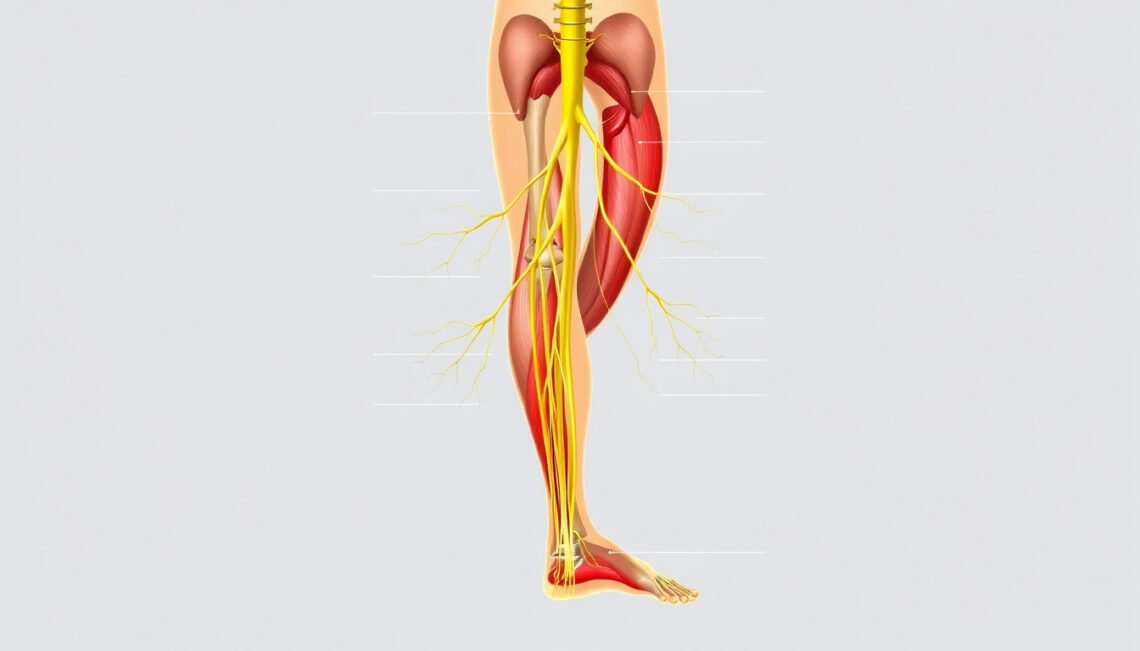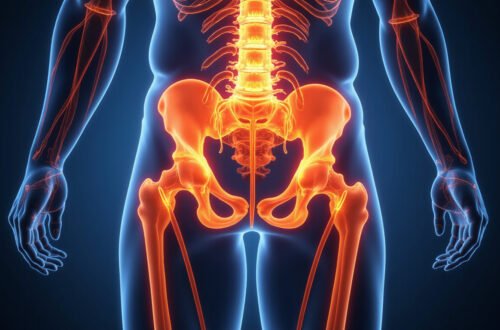Understanding the sciatic nerve anatomy is crucial for both medical professionals and individuals experiencing lower back or leg pain. The sciatic nerve is the longest and widest single nerve in the human body, playing a vital role in connecting the spinal cord with the leg and foot muscles. This article offers detailed insights into the structure, pathway, and function of the sciatic nerve, providing a comprehensive overview that can help you recognize the importance of this nerve in bodily movement and sensation.
What is the Sciatic Nerve?
The sciatic nerve originates from the lumbar and sacral spinal nerves, specifically from the L4 to S3 spinal nerve roots. It is responsible for supplying motor and sensory functions to a large portion of the lower body.
The sciatic nerve extends from the lower back through the hips and buttocks and down each leg, forming a crucial communication highway between the central nervous system and the lower limbs. Problems in this nerve can result in pain, weakness, or numbness known commonly as sciatica.
Detailed Sciatic Nerve Anatomy
Origin and Nerve Roots
The sciatic nerve is formed by the merging of five nerve roots from the lumbosacral plexus:
- Lumbar roots: L4 and L5
- Sacral roots: S1, S2, and S3
These spinal nerves exit the vertebral column through the intervertebral foramina in the lower spine and converge to form the sciatic nerve.
Pathway and Branches
Once formed, the sciatic nerve travels through the pelvis, exiting via the greater sciatic notch, beneath the piriformis muscle, and continues down the posterior aspect of the thigh. Near the knee, the nerve divides into two major branches:
- Tibial nerve – continuing down the back of the leg to the foot.
- Common peroneal (fibular) nerve – wrapping around the head of the fibula and continuing down the lateral aspect of the leg to the foot.
Structure and Composition
The sciatic nerve is composed of both sensory and motor nerve fibers:
- Motor fibers command muscles such as the hamstrings, leg, and foot muscles.
- Sensory fibers carry sensation from the skin of the leg, foot, and parts of the thigh.
The thick connective tissue sheath protects these nerve fibers, allowing flexibility and durability despite frequent movement and compression during daily activities.

Function of the Sciatic Nerve
The sciatic nerve performs several key functions essential to mobility and sensation:
- Motor control: It controls the majority of the muscles in the back of the thigh, as well as those responsible for foot and ankle movement.
- Sensory innervation: It provides sensation to the skin covering the lateral leg and the entire foot.
- Reflex activities: The sciatic nerve plays a role in reflex responses such as the knee-jerk and ankle-jerk reflexes.
Disruption to the sciatic nerve can impair walking, cause muscle weakness, or generate pain that radiates from the lower back to the foot.
Common Clinical Conditions Related to Sciatic Nerve Anatomy
Understanding sciatic nerve anatomy is vital in diagnosing and treating conditions that can arise due to nerve compression or injury, including:
- Sciatica: Pain resulting from compression or irritation of the sciatic nerve, often caused by a herniated disc or spinal stenosis.
- Piriformis Syndrome: Compression of the sciatic nerve by the piriformis muscle can cause symptoms mimicking sciatica.
- Nerve injury: Trauma to the nerve from fractures, surgeries, or prolonged sitting may result in sensory loss or motor dysfunction.
Early diagnosis and treatment enhance outcomes and can prevent long-term complications.
How to Maintain a Healthy Sciatic Nerve
To reduce the risk of sciatic nerve issues and maintain nerve health, incorporate the following habits:
- Maintain good posture, especially when sitting for long periods.
- Engage in regular low-impact exercises such as walking and swimming to strengthen back and core muscles.
- Avoid lifting heavy objects incorrectly; always use your legs, not your back.
- Stretch regularly focusing on hamstrings, glutes, and lower back muscles.
- Maintain a healthy weight to reduce stress on your lower spine.
Frequently Asked Questions About Sciatic Nerve Anatomy
Q1: Where exactly is the sciatic nerve located?
The sciatic nerve starts in the lower lumbar spine, travels through the pelvis, down the back of the thigh, and branches near the knee into the tibial and common peroneal nerves.
Q2: What does the sciatic nerve control?
It controls muscle movement in the back of the thigh, lower leg, and foot, and provides sensation to much of the leg and foot’s skin.
Q3: Can issues with the sciatic nerve cause leg weakness?
Yes, compression or damage to the sciatic nerve can cause muscle weakness and difficulty in leg and foot movement.
Conclusion: Understanding Sciatic Nerve Anatomy Enhances Your Health
Comprehending the complexities of the sciatic nerve anatomy is critical for diagnosing problems that affect walking, sensation, and quality of life. By recognizing the nerve’s pathway, functions, and possible complications, you are empowered to take actionable steps toward prevention and treatment. Whether dealing with sciatica or seeking to maintain nerve health, knowledge is your first line of defense.
If you experience persistent leg or lower back pain, don’t wait — consult a healthcare professional informed about nerve health. Early intervention can greatly improve your outcome and restore your mobility.
For more detailed anatomical references and clinical guidelines on peripheral nerves, the National Institutes of Health provides excellent resources (source).
Take charge of your health today by learning more about your body and how to protect the vital sciatic nerve that enables your every step!






